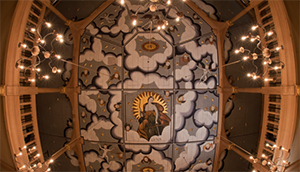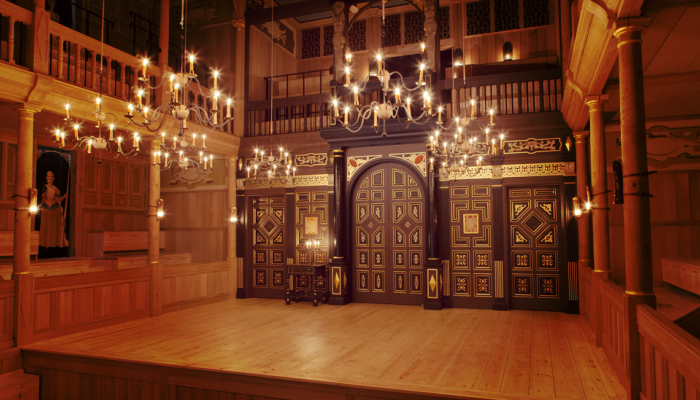
It’s impossible to appreciate the magic of theater by candlelight until you’ve witnessed it firsthand. The glow on the faces of actors and audiences, the glimmer of mirrors and gold leaf, the evocative play of light and shadow — it all makes for a unique performance environment that brings historic productions to life in an extraordinary way.
This is the draw of London’s Sam Wanamaker Playhouse, the 17th-century-style theater at Shakespeare’s Globe that opened in January 2014, and is enjoying its first full season of work this fall and winter. Taking over after the outdoor performance season finished in October, the new playhouse ensures that there is world-class theater being produced at the complex all year-round.
It was always part of the plan for there to be an intimate indoor facility to complement the huge outdoor space at the Globe, but it’s taken nearly 20 years to achieve this goal. Named after Sam Wanamaker, the pioneering American actor and director who founded Shakespeare’s Globe, the new playhouse is not based on any one Jacobean theater in particular (as is the case with The Globe), but is designed to reflect buildings of the period more generally. That said, there was an indoor playhouse in this part of London in the 1600s, where William Shakespeare’s own theater company, The King’s Men, was known to perform.
With a capacity of just 340, the Sam Wanamaker feels tiny compared to its sister theater, but the two are actually quite similar in format, comprising tiered seating galleries, a musician’s gallery and a pit, all around a thrust stage. Audience members feel close to the action in both spaces, but there’s an added intensity to the smaller, candlelit theater that makes for a really thrilling viewing experience, particularly when it comes to some of the bloody (The Changeling, January 15 through March 1, 2015) and passion-laden plays (The Broken Heart, March 12 through April 18, 2015) typical of the Jacobean era.
The Sam Wanamaker aims to increase our understanding of Shakespeare by putting his work in its context, showcasing plays by his contemporaries, such as John Webster and Francis Beaumont, as well as hosting operatic works and concerts from the period. It’s a wonderful addition to the British capital’s theater scene.

